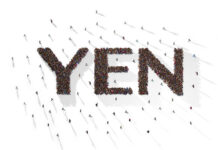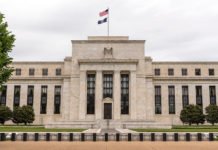Markets
Correction time yesterday on the EMU and US yield markets after last week’s hawkish repositioning. The trend was already visible on Monday in thin European trading and deepened. A further easing of Spanish inflation (HICP -0.2% M/M and 2.9% Y/Y from 3.8%; core CPI declining from 6.6% to 6.1%) and Belgian headline inflation (5.2% Y/Y from 5.6% Y/Y) were a good enough reason for investors to pick up bonds after their recent setback. German yields ceded between 10.4 bps (5-y) and 6.9 bps (30-y). US data provided less of a reason for a rebound in Treasuries. US house prices rose more than expected and consumer confidence (conference board) held up better than feared (102.3 from an upwardly revised 103.7). Fed’s Barkin repeated that inflation stays too high. US yields early in US dealings tried to row against the downtrend in Europe, but finally succumbed. US yields lost between 12 bps (5-y) and 7 bps (30-y), mainly driven by a correction in real yields (10-y: -8 bps). The proposal to suspend the US debt ceiling was cleared by the House rules committee and sent for approval to the House. Equities showed no clear directional trend. US indices closed mixed (Dow -0.15%, Nasdaq +0.3%). The DXY dollar index intraday reversed an early up-tick to close modestly lower at 104.16 (from 104.3). However, this move was at least partially due to an intraday decline in USD/JPY as Japanese authorities (BOJ, MOF, FSA) held an unscheduled meeting to discuss recent yen weakness. USD/JPY declined from an intraday top just below 141 to close at 139.79. USD/JPY 140 apparently is a first line in the sand for Japanese authorities. EUR/USD briefly dropped below the 1.07 big figure but also rebounded intraday to close at 1.0734. Sterling outperformed even as UK yields intraday joined the setback in the US and Europe. EUR/GBP closed just below the 0.8650 key support.
Softer than expected Chinese PMI’s (cf infra) put markets in risk-off modus this morning with Japan and China losing about 1-1.5%. Hong Kong even cedes about 2.5%. Korea outperforms. US yields decline modestly even as Fed Mester advocates the case for further rate hikes in an interview with the FT. USD/JPY extends yesterday’s setback below 140 (139.55). EUR/USD remains in the defensive (1.069). Later today, the focus turns to national EMU CPI data (Germany, France, Italy). Lower energy prices and favourable base effects suggest a further decline in headline CPI. This might reinforce the bid for EMU bonds. It probably won’t help the euro. In the US, we keep and eye at the JOLTS jobs openings. A lower than expected figure might also confirm the bond-friendly short-term momentum. The 4.25% area for the US 2-y yield is a first high profile support. For the 10-y German yield the 2.2% area remains an important reference. The ECB will publish its financial stability review.
News and views
Official May Chinese PMIs underwhelmed this morning. The manufacturing PMI unexpectedly ventured deeper in contraction area, from 49.2 to 48.8 (49.5 expected) with every sub indicator but one (delivery time) printing lower compared to April. Non-manufacturing business confidence eased from 56.4 to 54.5, still above the neutral 50 but less than the 55.2 consensus estimate. New orders slumped 6.5 points to 49.5 and employment remains stuck <50 (48.4). Business activity expectations remain at a lofty 60.4, although that’s down from 62.5 last month. The data again highlight the difficulties China’s economy is experiencing to really gain traction after a burst of consumer activity in Q1. Calls for economic stimulus measures grow louder. China’s yuan slips this morning with USD/CNY rising to the highest level (7.10) since November 2022. Chinese and Hong Kong stocks underperform regional peers.
Australian inflation in April accelerated to a faster-than-expected 6.8%. That’s up from 6.3% in March. The end of a temporary government fuel subsidy boosted last month’s inflation. That said, the likes of housing are still contributing strongly (8.9% y/y). Monthly figures are not as comprehensive as the quarterly readings but do give an idea of how prices are evolving. Shortly before the release, Reserve Bank of Australia governor Lowe reiterated the central bank’s data-dependent mode on interest rates. Australian swap yields rose about 7 bps at the front end before paring gains to 2.9-3.9 bps currently after Chinese PMI data dampened optimism. Money markets nevertheless almost fully price in one additional hike by August/September. Longer tenors add less than 1 bp. The Australian dollar CPI-driven rebound was very short lived. AUD/USD is testing the YtD lows around 0.6489..














